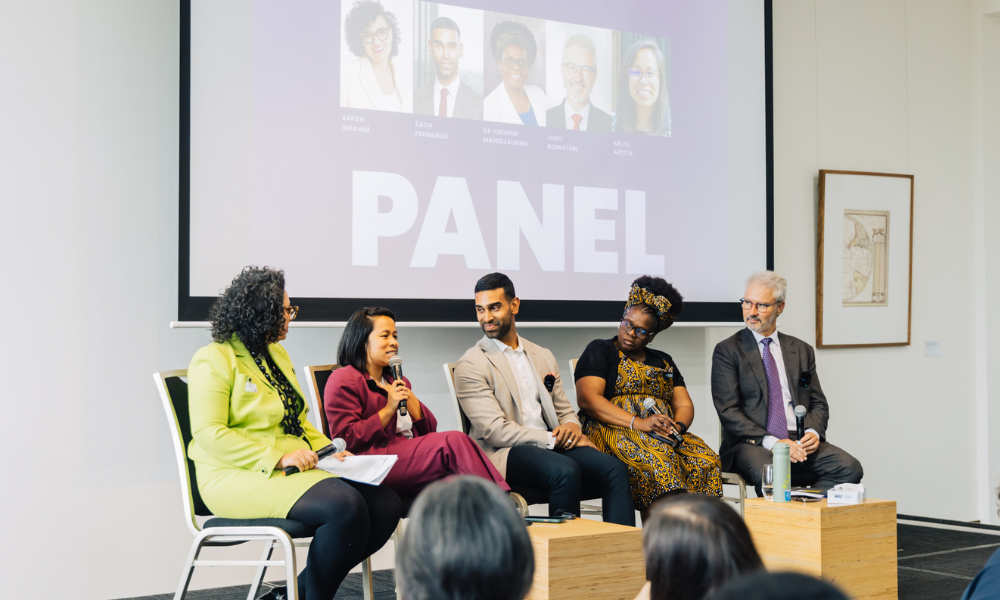Attempting to train those who are resistant to learning new things doesn't have to be agonising. Here’s how L&D professionals can effectively enforce their L&D program.
For many organisations, change goes hand in hand with L&D.
“In fact, there’s certainly a lot of L&D required as part of change,” said Jane Pattinson, managing director of force4change.
"Particularly in this day and age with digital disruption and businesses looking to acquire new skills and new capabilities."
However, a bit of resistance to change is common and can be disruptive, so it pays to be prepared for it.
Pattinson offers the following tips to persuade pessimists to become change champions.
Engage learners and understand their concerns
If we don’t address people’s concerns or we don’t hear them, this can create resistance. With L&D, we are often asking employees to build new capabilities or do things differently, and they can have concerns because it goes to the heart of what they do. This is their world which they are very proud of and rightly so.
Maintain a high level of participation in planning and development
It is important to plan your program and communication around the high level of participation in planning and development. Sometimes it’s good to communicate often and early. Other times, it’s about communicating often, but not early. There has to be a balance there in terms of how you engage stakeholders around that.
Expect resistance
Many organisations experience at least a little bit of resistance, so understand who can influence the situation and keep in mind that they may have to address those concerns at an individual level.
Leadership should walk the talk
That’s certainly a key aspect to reducing naysayers. If they see everyone in the organisation being involved, particularly from leaders and peers, then that’s a significant step.
Repeat the message often and be consistent, but also allow it to grow
Remember, you are also telling a story so it’s worth planning your messages so that they can grow and you can take people along for that journey. People will see that as being part of the progress of change or the progress of the L&D. This involves targeted messages, messages at the right time and always a clear message in terms of how it benefits the individual people. Also, don't bamboozle them with too much detail.
Dedicate time and effort to it
Many organisations are not good at change because they don’t expend enough energy on it. It’s often because lots of these organisations have limited exposure to change.
“In fact, there’s certainly a lot of L&D required as part of change,” said Jane Pattinson, managing director of force4change.
"Particularly in this day and age with digital disruption and businesses looking to acquire new skills and new capabilities."
However, a bit of resistance to change is common and can be disruptive, so it pays to be prepared for it.
Pattinson offers the following tips to persuade pessimists to become change champions.
Engage learners and understand their concerns
If we don’t address people’s concerns or we don’t hear them, this can create resistance. With L&D, we are often asking employees to build new capabilities or do things differently, and they can have concerns because it goes to the heart of what they do. This is their world which they are very proud of and rightly so.
Maintain a high level of participation in planning and development
It is important to plan your program and communication around the high level of participation in planning and development. Sometimes it’s good to communicate often and early. Other times, it’s about communicating often, but not early. There has to be a balance there in terms of how you engage stakeholders around that.
Expect resistance
Many organisations experience at least a little bit of resistance, so understand who can influence the situation and keep in mind that they may have to address those concerns at an individual level.
Leadership should walk the talk
That’s certainly a key aspect to reducing naysayers. If they see everyone in the organisation being involved, particularly from leaders and peers, then that’s a significant step.
Repeat the message often and be consistent, but also allow it to grow
Remember, you are also telling a story so it’s worth planning your messages so that they can grow and you can take people along for that journey. People will see that as being part of the progress of change or the progress of the L&D. This involves targeted messages, messages at the right time and always a clear message in terms of how it benefits the individual people. Also, don't bamboozle them with too much detail.
Dedicate time and effort to it
Many organisations are not good at change because they don’t expend enough energy on it. It’s often because lots of these organisations have limited exposure to change.







